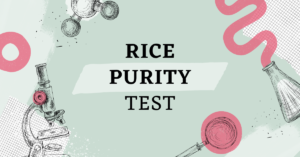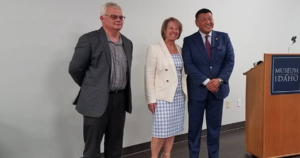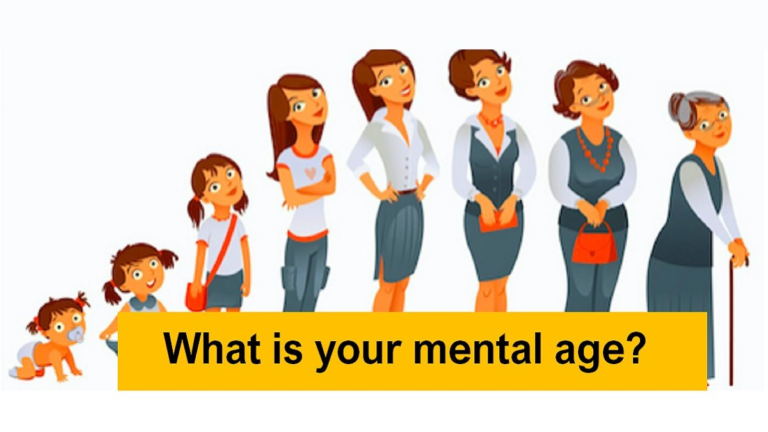The idea of “Mental Age” is a concept that has intrigued psychologists, educators, and the general public for over a century. It refers to the age level at which an individual functions mentally or intellectually, as opposed to their chronological age. A person’s mental age can be higher, lower, or equal to their actual age, providing insights into their cognitive abilities and potential. Mental age testing is often used to assess intellectual development, cognitive skills, and learning capacity, especially in children. However, its applications extend to adults, where it can offer valuable perspectives on cognitive health, creativity, and even personality traits.
In this comprehensive article, we will delve into the history, development, applications, and controversies surrounding mental age tests. We will also explore how these tests are conducted, their accuracy, and their relevance in modern psychology. By the end of this article, you will have a thorough understanding of mental age, its implications, and the role it plays in various domains of life.
The Origins of Mental Age Testing
The concept of mental age was first introduced in the early 20th century by French psychologist Alfred Binet and his colleague Théodore Simon. Binet and Simon were tasked by the French government with developing a method to identify students who required special educational assistance. Their goal was to create a tool that could measure a child’s intellectual abilities in comparison to their peers.
In 1905, Binet and Simon published the first version of their test, which came to be known as the Binet-Simon Scale. This test was designed to measure a child’s mental age by assessing various cognitive skills, such as reasoning, problem-solving, memory, and comprehension. The concept of mental age allowed Binet and Simon to categorize children based on their cognitive development rather than their physical age.
For example, if a 7-year-old child performed at the level of an average 9-year-old, they would be said to have a mental age of 9. Conversely, if they performed at the level of a 5-year-old, their mental age would be considered 5. This concept was revolutionary at the time and laid the foundation for modern intelligence testing.
The Evolution of Mental Age Testing
After the introduction of the Binet-Simon Scale, the concept of mental age quickly gained traction in the field of psychology. In 1916, the American psychologist Lewis Terman adapted and expanded the Binet-Simon Scale for use in the United States. This adaptation, known as the Stanford-Binet Intelligence Scale, became one of the most widely used intelligence tests in the world.
Terman introduced the idea of the Intelligence Quotient (IQ), which is calculated. By dividing a person’s mental age by their chronological age and multiplying the result by 100. For example, a 10-year-old child with a mental age of 12 would have an IQ of 120 (12/10 x 100). This formula allowed for a standardized measure of intelligence across different age groups.
The Stanford-Binet Intelligence Scale and the concept of IQ became the gold standard in intelligence testing for many years. However, as the field of psychology evolved, so did the understanding of intelligence. Researchers began to recognize that intelligence is a multifaceted construct that cannot be fully captured by a single number.
The Application of Mental Age Tests
Mental age tests have been used in various contexts, ranging from educational assessments to psychological evaluations. One of the most common applications is in the identification of children with intellectual disabilities or giftedness. By comparing a child’s mental age to their chronological age, educators and psychologists. Can identify students who may require special educational interventions or advanced programs.
In addition to educational assessments, mental age tests have been use in clinical settings to evaluate cognitive functioning. In individuals with neurological conditions, such as dementia or brain injuries. These tests can help clinicians assess the extent of cognitive decline and develop appropriate treatment plans.
Mental age tests are also use in research to study cognitive development across the lifespan. By administering these tests to individuals of different ages, researchers can gain insights into how cognitive abilities change over time and how factors such as education, environment, and genetics influence intellectual development.
The Limitations and Criticisms of Mental Age Testing
While mental age tests have provided valuable insights into cognitive development, they are not without their limitations and criticisms. One of the main criticisms is that these tests often rely heavily on verbal and mathematical skills, which may not fully capture an individual’s cognitive abilities. For example, a person who excels in creative or artistic endeavors may not perform well on a traditional mental age test, leading to an inaccurate assessment of their cognitive abilities.
Another limitation is that mental age tests often fail to account for cultural and socio-economic factors that can influence cognitive development. For example, a child from a disadvantaged background may have less exposure to educational resources and opportunities, leading to a lower mental age score. However, this does not necessarily reflect their intellectual potential.
Furthermore, the concept of mental age itself has been criticize for oversimplifying the complex nature of intelligence. Intelligence is not a fixe trait that can be easily measure by a single test; rather, it is a dynamic and multifacete construct. That is influence by a wide range of factors, including genetics, environment, and personal experiences.
Modern Approaches to Measuring Cognitive Abilities
In response to the limitations of traditional mental age tests, modern psychologists have developed a variety of alternative methods for assessing cognitive abilities. These methods take into account the multifaceted nature of intelligence and aim to provide. A more comprehensive and accurate assessment of an individual’s cognitive strengths and weaknesses.
One such approach is the use of multiple intelligences theory, proposed by psychologist Howard Gardner in the 1980s. Gardner’s theory posits that intelligence is not a single entity, but rather a collection of different cognitive abilities. Such as linguistic, logical-mathematical, spatial, musical, bodily-kinesthetic, interpersonal, intrapersonal, and naturalistic intelligence. According to this theory, individuals may excel in some areas of intelligence while struggling in others.
Another modern approach is the use of neuropsychological assessments, which are designe to measure specific cognitive functions. Such as memory, attention, executive functioning, and problem-solving skills. These assessments are often use in clinical settings to evaluate individuals with neurological conditions or cognitive impairments.
In addition to these approaches, researchers have also develop computerize cognitive assessments that can be administer online or through mobile devices. These assessments often use interactive tasks and games to measure cognitive abilities in a more engaging and dynamic way. They can provide valuable insights into cognitive functioning across different domains, such as memory, attention, processing speed, and executive functioning.
The Role of Mental Age in Education and Learning
Mental age tests have long been use in educational settings to assess students’ intellectual abilities and guide educational interventions. However, the use of these tests in education has evolved over time, reflecting changes in our understanding of intelligence and learning.
In the early 20th century, mental age tests were often use to categorize students into different educational tracks based on their perceived intellectual abilities. For example, students with a higher might be place in advance programs, while those with a lower mental age might be place in remedial programs. This practice was base on the assumption that intelligence is a fixe trait that can be accurately measure and use to predict academic success.

However, as our understanding of intelligence and learning. Has evolved, so too has the use of it tests in education. Today, there is a greater emphasis on recognizing the diverse ways in which students learn and the importance of providing individualized educational interventions. Rather than relying solely on mental age tests, educators now use a variety of assessment tools to gain a more comprehensive understanding of students’ cognitive abilities and learning needs.
For example, educators may use formative assessments, such as classroom observations and performance tasks, to assess students’ progress and identify areas where they may need additional support. They may also use adaptive learning technologies, which use data-driven algorithms. To provide personalized learning experiences based on students’ strengths and weaknesses.
In addition to these assessment tools, educators also recognize the importance of creating a supportive and inclusive learning environment. That fosters students’ intellectual growth and development. This includes providing opportunities for students to engage in collaborative learning, problem-solving, and critical thinking activities. That challenge their cognitive abilities and promote intellectual growth.
The Future of Mental Age Testing
As our understanding of intelligence and cognitive development continues to evolve, so too will the future of mental age testing. One area of potential growth is the use of technology to create more dynamic and interactive assessments. That can provide a more accurate and comprehensive measure of cognitive abilities.
For example, researchers are exploring the use of virtual reality (VR) and augmented. Reality (AR) technologies to create immersive cognitive assessments that can simulate real-world tasks and challenges. These technologies have the potential to provide a more accurate measure of cognitive abilities by assessing how individuals perform in complex and dynamic environments.
Another area of potential growth is the use of artificial intelligence (AI) and machine. Learning algorithms to analyze cognitive assessment data and provide personalized feedback and recommendations. These technologies have the potential to revolutionize the way cognitive assessments are conduct, by providing real-time insights. Into individuals’ cognitive strengths and weaknesses and guiding personalized interventions.
In addition to these technological advancements, there is also a growing recognition of the importance of taking a holistic approach to assessing cognitive abilities. This includes considering not only cognitive skills but also other factors. That influence intellectual development, such as emotional intelligence, creativity, and social skills.
Conclusion
Mental age tests have played a significant role in the field of psychology and education for over a century. They have provided valuable insights into cognitive development, intellectual abilities, and learning capacity. However, as our understanding of intelligence and cognitive development has evolved, so too has the use and interpretation of mental age tests.



















в телефоне.
Как быстро найти и удалить дубликаты номеров на Android.
Что делать, чтобы не создавать дубликаты номеров при импорте.
Почему важно избавляться от дубликатов номеров.
Освободите память смартфона: избавьтесь от дубликатов номеров.
Как очистить ваш iPhone от дубликатов номеров.
Как быстро проверить и удалить дубликаты номеров.
Какие программы помогают избавиться от дубликатов номеров?.
Плюсы избавления от дубликатов номеров на вашем устройстве.
Дубликаты номеров: чистка ваших контактов.
изготовление номеров на авто https://www.izgotovlenie-nomera.ru/ .